FAQ - Advanced Bathroom Queries
How Does Toilet Flush System Work
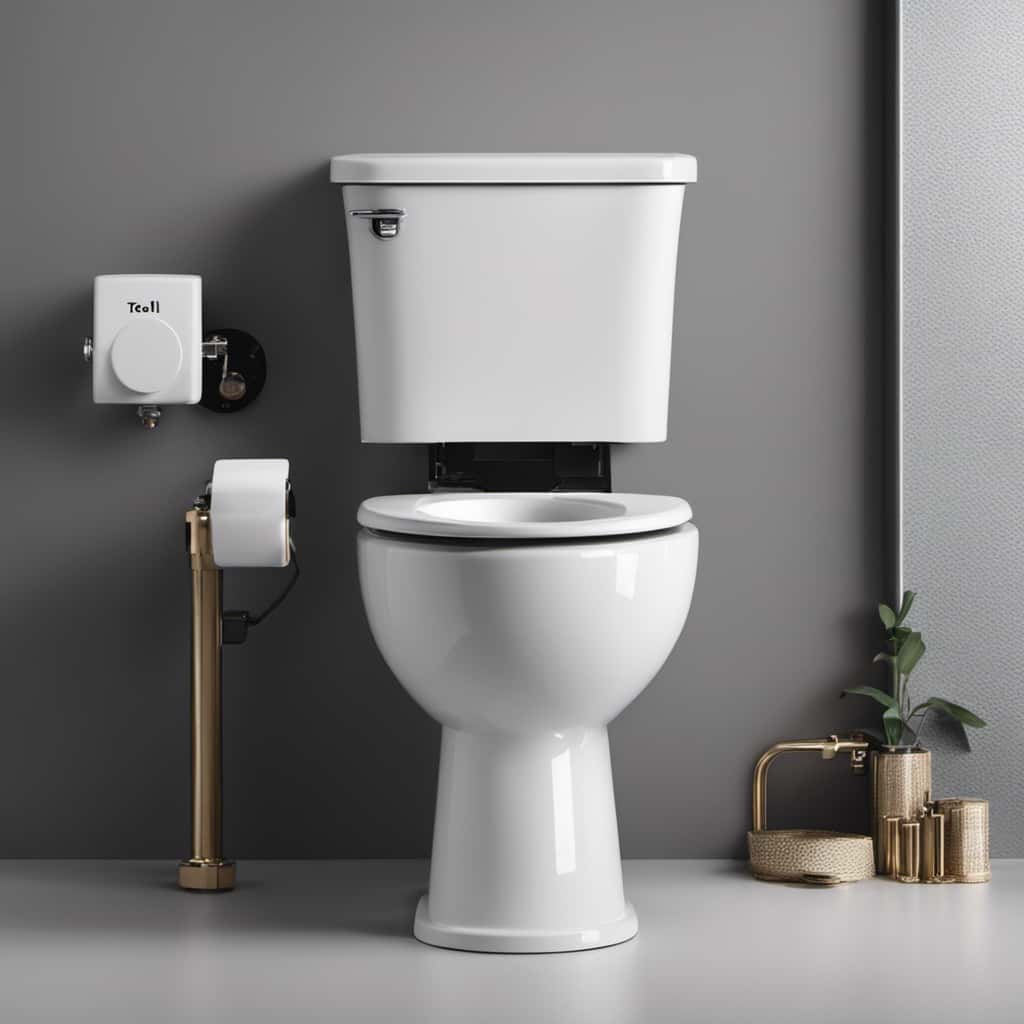
Have you ever pondered about the mechanics behind a toilet flush system?
Well, dear reader, allow us to enlighten you.
The inner workings of this marvel of engineering are fascinating.
From the water supply to the flushing mechanism, the flapper valve to the siphon action, and the tank refill system, every component plays a crucial role in the efficient operation of your toilet.
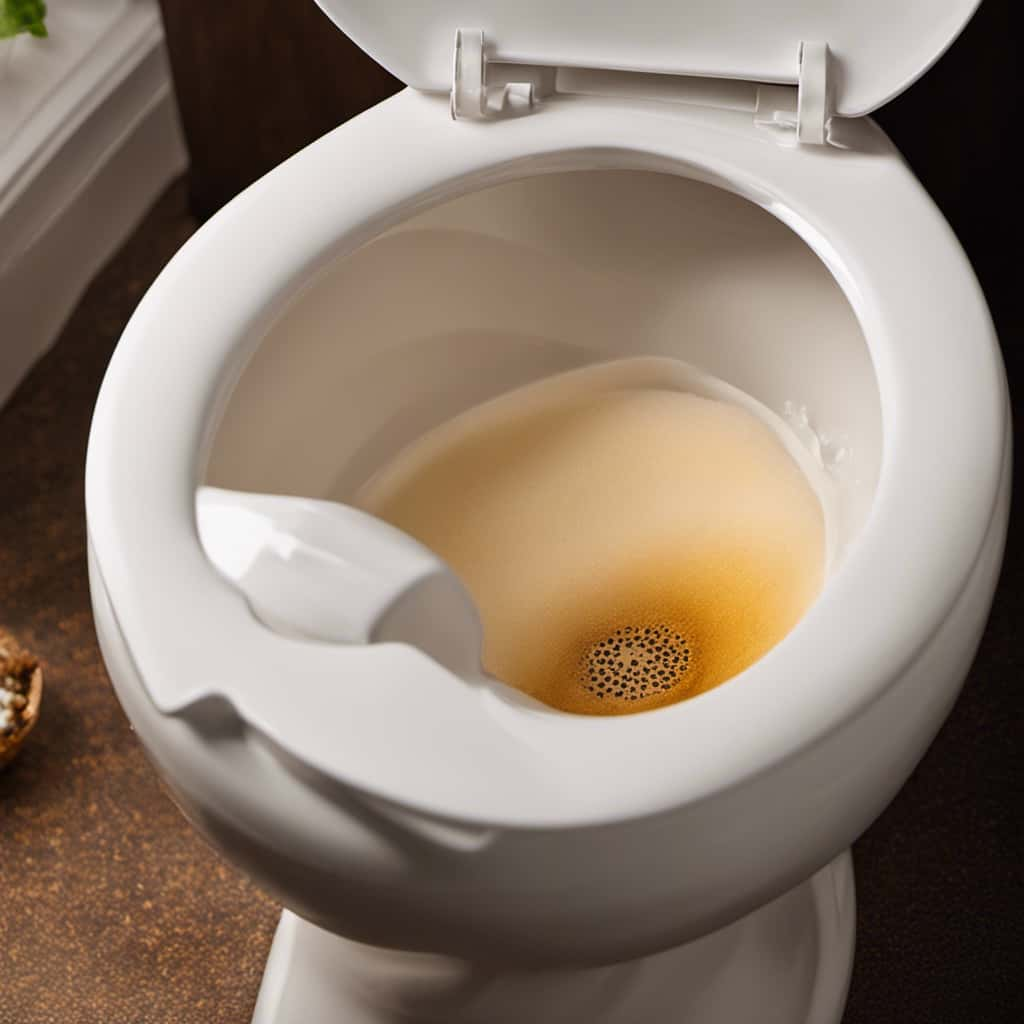
Join us as we delve into the intricate details of the toilet flush system and unravel its mysteries.
Key Takeaways
- Adequate water pressure is crucial for a strong flush.
- The flushing mechanism involves the forceful expulsion of waste from the toilet bowl using a flush valve and a fill valve.
- The flapper valve is a crucial component that controls water flow during a flush and requires regular maintenance for efficient operation.
- The siphon action utilizes gravity flow and air pressure to create a powerful flushing mechanism that ensures efficient and thorough removal of waste.
Water Supply
One of the key components of the toilet flush system is the water supply, which provides the necessary amount of water for flushing. The water supply is connected to the toilet bowl through a pipe, ensuring a constant flow of water when needed.
To maintain an effective flush, the water pressure plays a crucial role. Adequate water pressure is required to create a strong force that pushes waste down the drain and ensures a clean and efficient flush. Insufficient water pressure can lead to incomplete flushing and may require multiple flushes to get the job done. Therefore, it’s essential to maintain proper water pressure in the toilet flush system to ensure optimal performance.
Now that we understand the importance of the water supply and water pressure, let’s move on to discussing the flushing mechanism.

Flushing Mechanism
Now let’s delve into the flushing mechanism, which involves the forceful expulsion of waste from the toilet bowl. The flushing efficiency of a toilet is a crucial factor in its overall performance.
The mechanism consists of a flush valve and a fill valve. When the flush lever is pressed, the flush valve opens, allowing water to rush into the bowl. This sudden surge of water creates a strong force that pushes waste down the drain, ensuring efficient removal.
The fill valve then refills the tank with water, preparing it for the next flush.
While flushing efficiency is important, it’s also essential to consider the environmental impact. Toilets with lower water consumption help conserve water resources and reduce the strain on wastewater treatment systems, making them more environmentally friendly options.

Flapper Valve
The flapper valve is a crucial component of the toilet flush system. It’s responsible for controlling the flow of water from the tank into the bowl during a flush.
When the flush lever is pressed, it lifts the flapper valve, allowing water to rush into the bowl and create a siphon that carries away waste. The flapper valve then closes tightly, preventing any water from leaking into the bowl until the next flush.
Proper maintenance of the flapper valve is essential to ensure the toilet flush system works efficiently. Over time, flapper valves can wear out or become damaged, resulting in leaks and incomplete flushes. If this occurs, it’s important to replace the flapper valve promptly to maintain the toilet’s functionality.
Regular inspection and maintenance of the flapper valve can help prevent issues and extend its lifespan.

Siphon Action
To understand how the toilet flush system works, let’s delve into the siphon action that plays a vital role in carrying away waste. Siphon action is a process that utilizes the principles of gravity flow and air pressure to create a powerful flushing mechanism. When the toilet is flushed, water is released from the tank into the bowl, causing a sudden increase in pressure. This increase in pressure pushes the waste and water mixture over the siphon bend in the toilet trap, creating a siphon effect. As the water flows down the drain, it creates a low pressure area behind it, causing the waste and water to be sucked out of the bowl and into the sewer system. This siphon action ensures efficient and thorough removal of waste, leaving the toilet bowl clean and ready for the next use.
| Component | Role |
|---|---|
| Tank | Stores the water for flushing |
| Flapper valve | Controls the release of water from the tank |
| Siphon bend | Creates the siphon effect to carry away waste |
| Drain pipe | Directs waste and water into the sewer system |
Tank Refill System
We use a float ball mechanism to regulate the water level in the tank.
This mechanism consists of a float ball attached to a lever arm, which is connected to a float valve.
When the tank is empty, the float ball hangs down, causing the float valve to open and allow water to flow into the tank.

As the water level rises, the float ball also rises, causing the float valve to close and stop the flow of water.
This ensures that the tank doesn’t overflow.
The tank refill system is designed to provide enough water for a complete flush while also allowing for bowl cleaning.
Once the flush is initiated, the tank refill system quickly replenishes the tank with water, readying it for the next use.

Frequently Asked Questions
How Often Should I Replace the Flapper Valve in My Toilet’s Flushing Mechanism?
We should replace the flapper valve in our toilet’s flushing mechanism when it shows signs of wear and tear. Signs like water leakage or incomplete flushing indicate a faulty flapper valve. To troubleshoot, follow step-by-step guides on how to replace it.
Can I Use a Different Type of Flushing Mechanism in My Toilet if the Original One Breaks?
Yes, you can use alternative flushing mechanisms if your original one breaks. There are different types of toilet flushing systems, each with their own pros and cons. It’s important to consider factors like water efficiency and ease of maintenance when choosing a replacement.
Why Does My Toilet Sometimes Refill Slowly After Flushing?
Sometimes, our toilet may refill slowly after flushing. This can be caused by various factors, such as a clogged water supply, a faulty fill valve, or a partially closed shut-off valve. Troubleshooting and fixing these issues can help improve the toilet flush system.
Is It Possible to Increase the Water Pressure in the Siphon Action of My Toilet to Improve Its Flushing Power?
Can we boost the water pressure in our toilet’s siphon to enhance flushing power? By increasing water pressure, we can improve the force with which water enters the bowl, leading to better flushing performance.
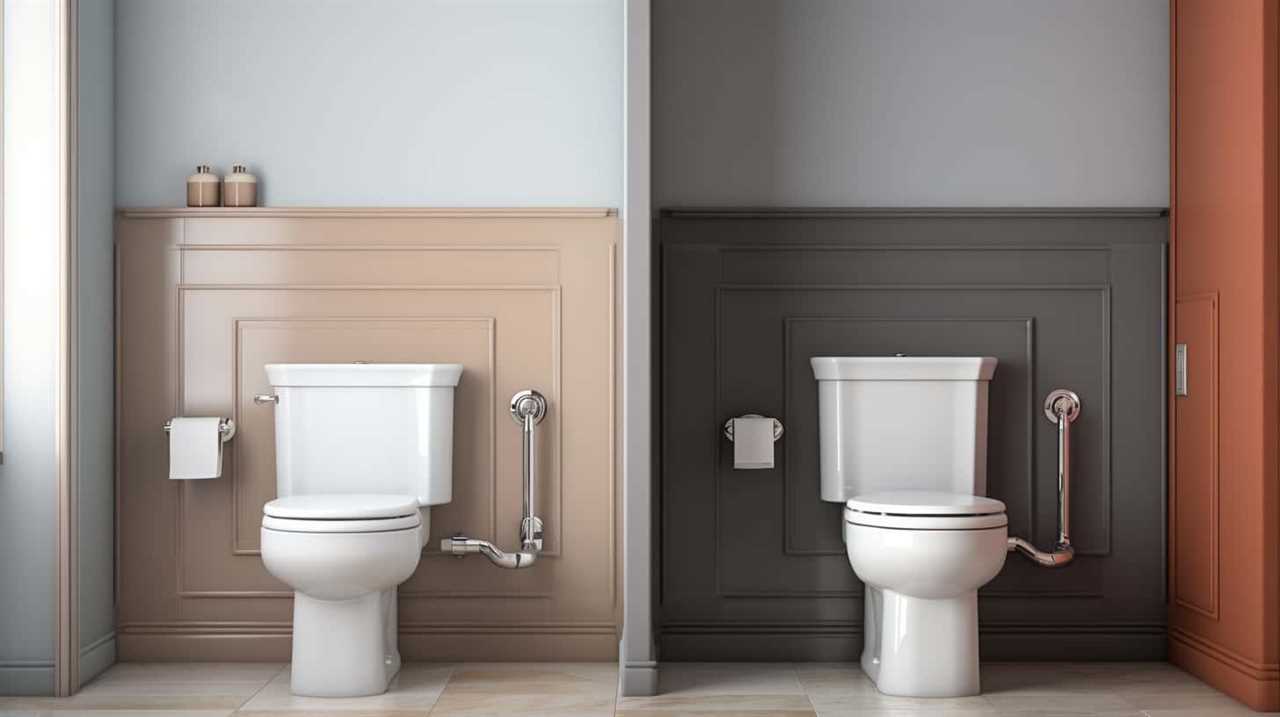
What Are Some Common Signs That Indicate a Problem With the Tank Refill System in My Toilet?
Common signs of a toilet tank refill system problem include slow tank refill, water continuously running, and weak flush. Causes may include a faulty fill valve or flapper. To fix, replace the faulty component.
Conclusion
In conclusion, the toilet flush system operates like a symphony of precision. The water supply acts as the conductor, orchestrating the flushing mechanism, flapper valve, and siphon action to create a harmonious expulsion of waste.
Like a well-tuned instrument, the tank refill system ensures a seamless performance, ready for the next act.
So, next time you flush, remember the intricate dance of components working together, making your toilet a true maestro of cleanliness.
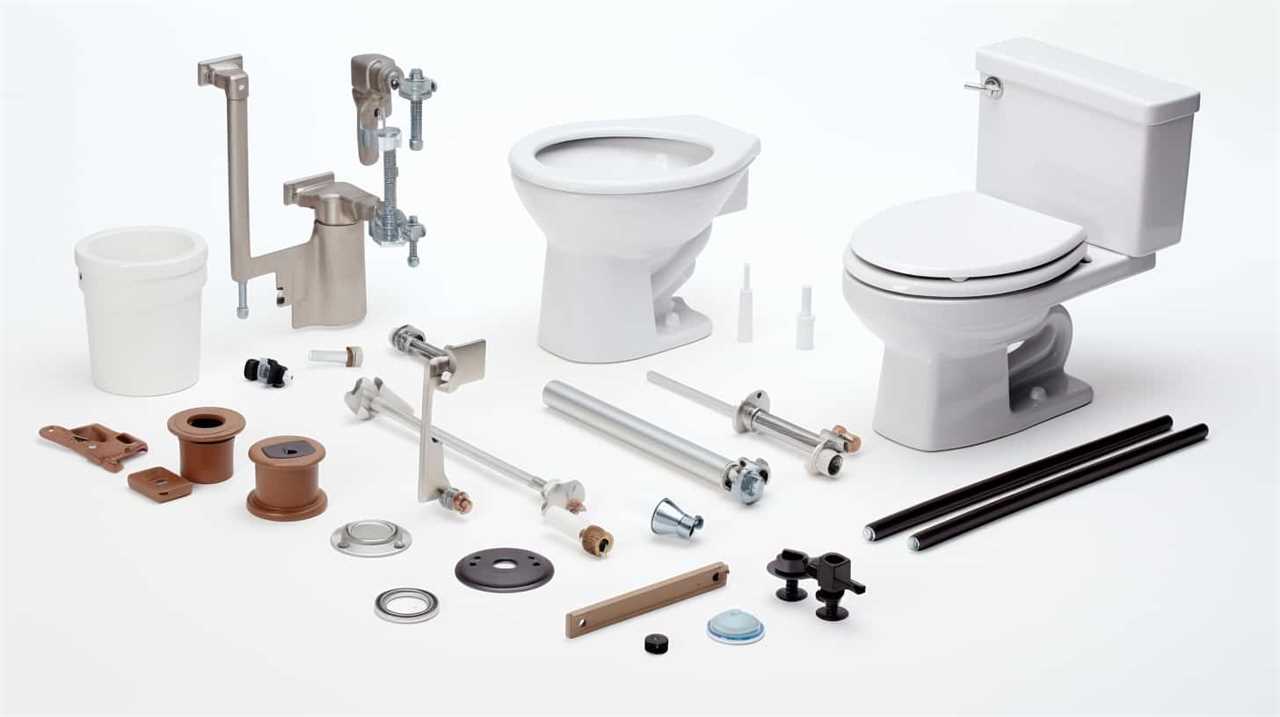
With an impeccable eye for detail and a passion for bathroom-related, Ava leads our editorial team gracefully and precisely.
Under her guidance, Best Modern Toilet has flourished as the go-to resource for modern bathroom enthusiasts. In her free time, you might find Ava exploring antique shops and looking for vintage bathroom fixtures to add to her collection.
FAQ - Advanced Bathroom Queries
Do You Get Charged Every Time You Flush the Toilet

Do we incur charges each time we use the toilet? It’s a common question that has left many of us wondering. In this article, we will delve into the intriguing relationship between water usage and billing.
We’ll delve into how water is measured for billing purposes and break down the cost of flushing in numbers. Additionally, we’ll discuss the factors that impact our water bills and share valuable tips for reducing water usage and saving money.
Get ready to master the art of understanding your water bill!
Key Takeaways
- Water meters accurately measure the amount of water used and are used to calculate monthly water bills.
- The cost of flushing involves analyzing water consumption and its impact on monthly charges, taking into account factors such as the number of occupants and flushing habits.
- Investing in water-saving appliances, fixing leaks promptly, and practicing water conservation tips can lower water consumption and save money.
- Installing eco-friendly bathroom fixtures, being mindful of water usage habits, taking shorter showers, and collecting rainwater can all contribute to water conservation and cost savings.
Water Meter and Billing: Understanding the Connection
We need to understand the connection between our water meter and billing to determine how we’re charged for our water usage.

The process begins with the installation of a water meter, which measures the amount of water flowing into our homes. This meter is typically installed at the property line or in the basement. It’s important to note that water meter installation is a crucial step in accurately tracking our water usage.
Once the meter is in place, it records the volume of water consumed, which is then used to calculate our monthly water bill. By understanding this connection, we can become more aware of our water usage and make informed decisions about our consumption.
This knowledge is especially important in the context of water conservation initiatives, as it allows us to actively monitor and reduce our water usage to contribute to a sustainable future.
How Water Usage Is Measured for Billing
Continuing from our previous discussion on the connection between water meter installation and billing, let’s now delve into how water usage is measured for our monthly charges.

- Water conservation strategies: It’s important to implement water conservation strategies to reduce overall water consumption. This can include using low-flow fixtures, fixing leaks promptly, and practicing responsible irrigation.
- Calculating water consumption: Water meters are installed to accurately measure the amount of water used. They record the volume of water passing through the meter, usually in cubic feet or gallons. The difference between the current reading and the previous reading gives the total water consumption during a billing period.
- Billing based on consumption: The water utility company uses the recorded water consumption to calculate the monthly charges. The cost per unit of water may vary depending on the specific pricing structure set by the company.
With an understanding of how water usage is measured for billing, let’s now explore the cost of flushing and break down the numbers.
The Cost of Flushing: Breaking Down the Numbers
Calculating the cost of flushing involves analyzing water consumption and its impact on monthly charges. To determine the cost, it’s necessary to conduct a water consumption analysis and calculate the average monthly water usage.
This analysis involves measuring the amount of water used for each flush and multiplying it by the number of times the toilet is flushed each month. The average monthly water usage can vary depending on factors such as the number of occupants in the household and their flushing habits.
Factors That Impact Your Water Bill
To understand the factors that impact your water bill, it’s important to consider various elements that contribute to water consumption and ultimately affect monthly charges. Here are three key factors that can influence your water bill:

- Water saving appliances: Investing in water-saving appliances like low-flow toilets, showerheads, and faucets can significantly reduce water usage. These appliances are designed to optimize water flow while minimizing waste, helping you save money on your water bill.
- Water conservation tips: Simple habits like fixing leaks promptly, taking shorter showers, and turning off the tap while brushing your teeth can go a long way in conserving water. By implementing these water conservation tips, you can lower your water consumption and subsequently reduce your monthly charges.
- Outdoor water usage: Watering lawns, gardens, and washing cars can contribute to a significant portion of your water bill. Using efficient irrigation systems, collecting rainwater, and washing vehicles at car wash facilities instead of at home can help decrease outdoor water usage and keep your bill in check.
Tips for Reducing Water Usage and Saving Money
To further decrease water consumption and save money on your water bill, let’s explore some practical tips.
Conserving water isn’t only environmentally friendly, but it can also lead to significant cost savings.
One of the most effective strategies is to install eco-friendly bathroom fixtures. These fixtures, such as low-flow toilets and showerheads, are designed to minimize water usage without compromising functionality.
Additionally, repairing any leaks promptly can save a substantial amount of water.

Another practical tip is to be mindful of your water usage habits. Simple actions like turning off the tap while brushing your teeth or taking shorter showers can make a big difference.
Finally, consider collecting rainwater to use for activities like watering plants or washing your car.
Frequently Asked Questions
How Can I Track My Water Usage in Real-Time?
To track water usage in real-time, we recommend using a smart water meter. It allows for accurate tracking and provides various benefits such as identifying leaks, optimizing water usage, and reducing costs.
Are There Any Additional Charges for Flushing a Toilet Multiple Times in a Row?
There may be additional charges for multiple flushes in a row. Each flush adds to water usage, which can increase costs. It’s important to be mindful of our water consumption to avoid unnecessary expenses.

Do I Get Charged for Using Water to Wash My Hands?
We are not charged for using water to wash our hands, but it is important to practice water conservation to reduce the environmental impact. Conserving water helps preserve our natural resources and supports sustainability.
Can I Get a Refund if There Is a Leak in My Toilet That Causes Excessive Water Usage?
Certainly! When it comes to a refund for a toilet leak and excessive water usage, it’s crucial to track water usage. By monitoring consumption, you can determine if a leak occurred and potentially be eligible for a refund.
Is There a Difference in Water Usage Between Flushing a Liquid Waste and Solid Waste?
Toilet flushing efficiency can be impacted by the difference in water usage between flushing liquid waste and solid waste. Water conservation measures can help optimize flushing and reduce overall water consumption.
Conclusion
In conclusion, understanding how water usage is measured for billing can help us make informed decisions about our water consumption.
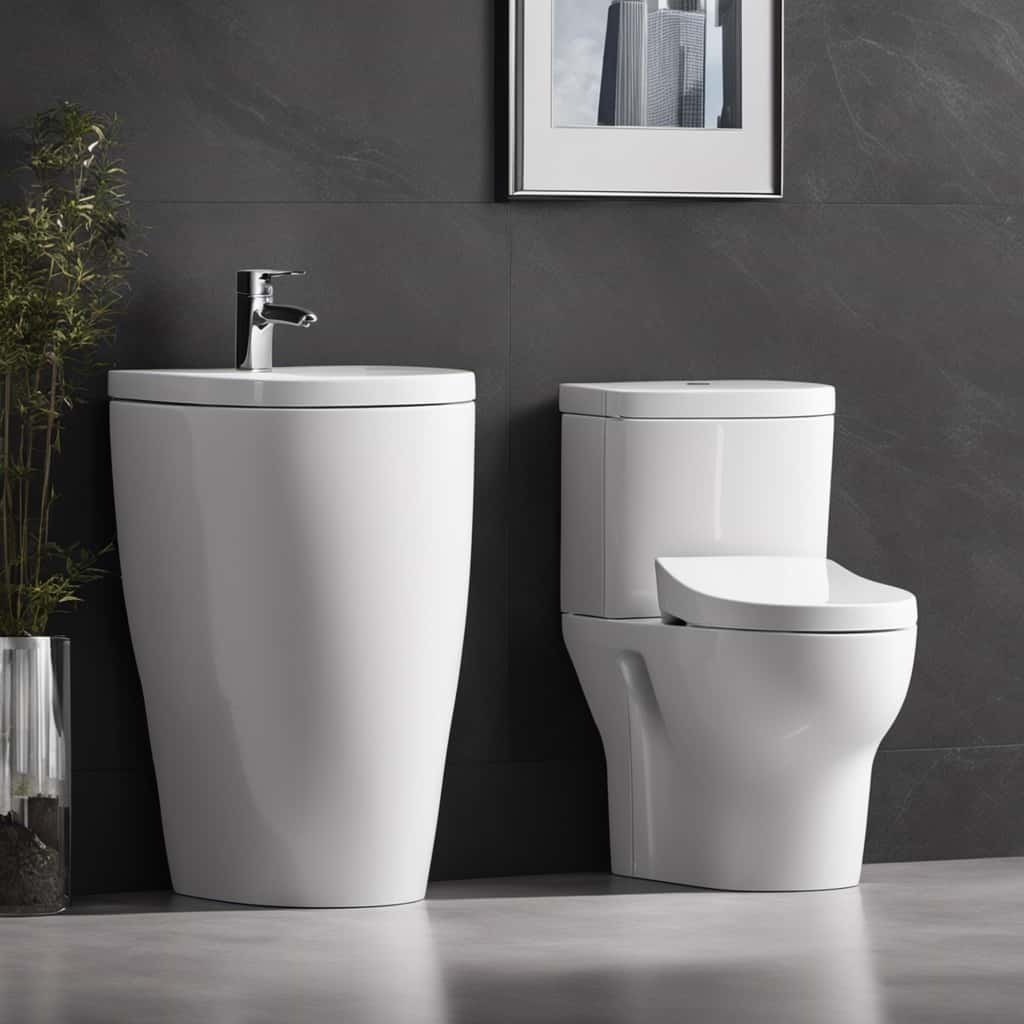
Did you know that the average toilet flush uses about 1.6 gallons of water?
By reducing our flushing frequency or upgrading to more water-efficient toilets, we can significantly impact our water bills and contribute to conservation efforts.
So next time you flush, remember that every drop counts!
With an impeccable eye for detail and a passion for bathroom-related, Ava leads our editorial team gracefully and precisely.
Under her guidance, Best Modern Toilet has flourished as the go-to resource for modern bathroom enthusiasts. In her free time, you might find Ava exploring antique shops and looking for vintage bathroom fixtures to add to her collection.
FAQ - Advanced Bathroom Queries
How to Flush Toilet With Sensor
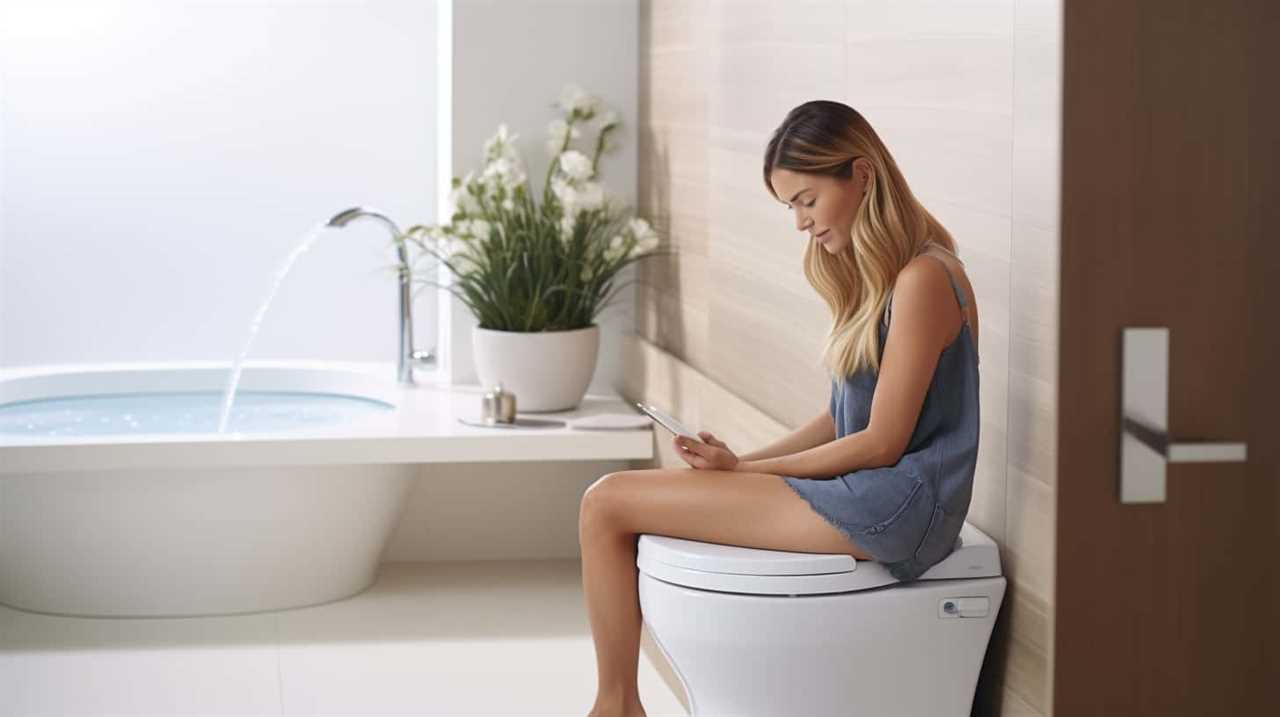
We have all dealt with the annoyance of a malfunctioning toilet flush system.
But did you know that using a sensor-operated flush system can greatly improve efficiency and convenience?
In this article, we’ll show you how to flush a toilet with a sensor, step-by-step.
From choosing the right sensor for your toilet to proper maintenance and troubleshooting tips, we’ll help you master this technology and maximize water conservation.

Say goodbye to manual flushing and embrace the future of bathroom technology.
Key Takeaways
- Improved hygiene with touchless operation
- Automatic flushing after use for cleanliness
- Convenience of hands-free and hassle-free flushing
- Enhanced user experience with modern technology
Benefits of Using a Sensor-Operated Flush System
We have discovered several significant benefits of using a sensor-operated flush system for toilets.
One of the main advantages is improved hygiene. With a sensor-operated flush system, there’s no need to touch any buttons or handles, reducing the spread of germs and bacteria. Additionally, these systems often come with features such as automatic flushing after use, ensuring that the toilet is always clean and ready for the next user.
Another advantage is water conservation. Sensor-operated flush systems are designed to use the optimal amount of water needed for each flush, reducing water wastage and helping to conserve this valuable resource.
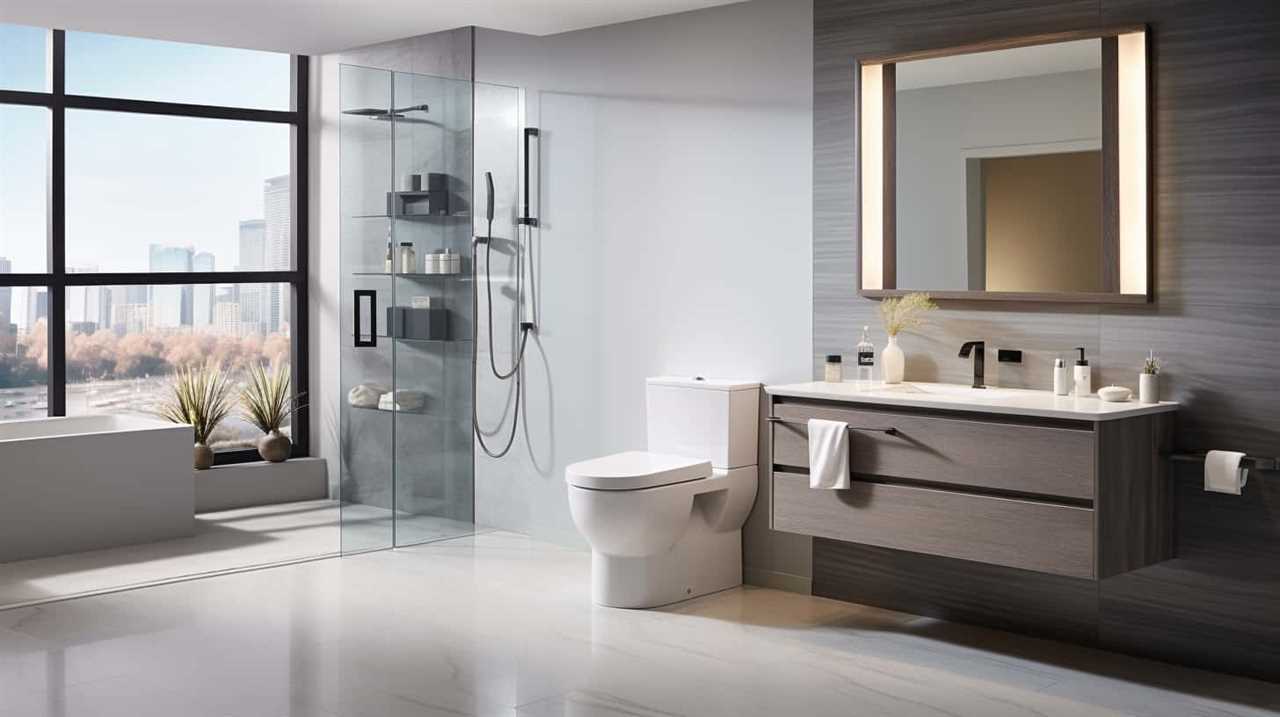
Furthermore, these systems are also more convenient, as they eliminate the need for manual flushing, providing a hands-free and hassle-free experience.
Choosing the Right Sensor for Your Toilet
One important step in installing a sensor-operated flush system is selecting the appropriate sensor for your toilet. When it comes to sensor types, there are a few options to consider. The most common sensor type is the infrared sensor, which detects body heat and triggers the flush. Another option is the ultrasonic sensor, which uses sound waves to detect the presence of a user. Additionally, there are also pressure sensors that detect when someone sits down or stands up.
When choosing a sensor, it’s important to consider the cost. Infrared sensors are generally the most affordable option, while ultrasonic sensors tend to be slightly more expensive. Pressure sensors are often the most expensive option, but they offer additional functionality.
Now that we understand the different sensor types and cost comparison, let’s move on to the step-by-step installation guide for the sensor-operated flush system.
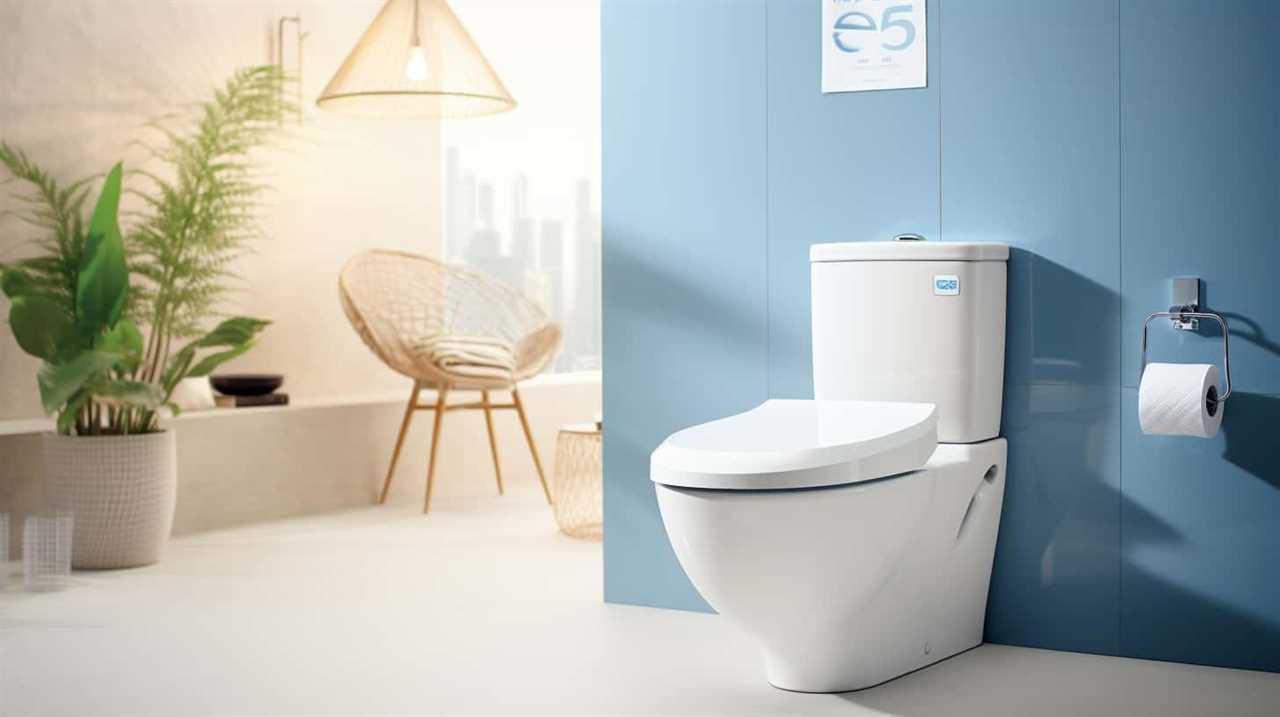
Step-by-Step Installation Guide for Sensor-Operated Flush System
To begin installing the sensor-operated flush system, we’ll first need to gather the necessary tools and materials. You’ll need a sensor-operated flush kit, which can be purchased at a local hardware store or online. Additionally, you’ll need a wrench, pliers, screwdriver, and a level.
The installation process begins by turning off the water supply to the toilet and draining the tank. Next, remove the existing flush handle and install the sensor-operated flush kit according to the manufacturer’s instructions. Ensure that the sensor is properly placed near the toilet bowl and adjust its position using a level. Make sure all the connections are secure and tighten any loose fittings.
Finally, turn on the water supply and test the sensor-operated flush system. Adjust the sensor sensitivity if necessary.
With careful installation and sensor placement, you can enjoy the convenience and efficiency of a hands-free flush system.
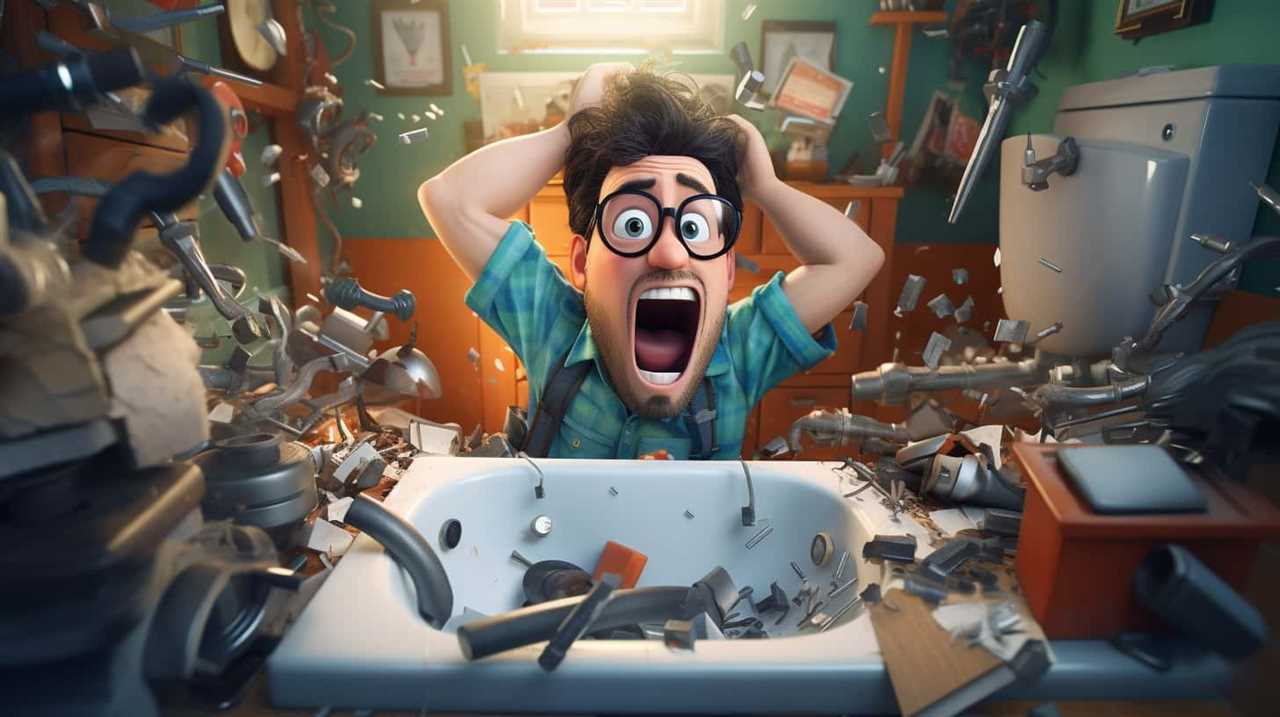
Proper Maintenance and Troubleshooting Tips
Regular maintenance and troubleshooting are essential for ensuring the optimal performance of a sensor-operated flush system. To troubleshoot common issues, start by checking the sensor’s alignment and cleanliness. Make sure it’s mounted correctly and free from any obstructions that could interfere with its operation. Clean the sensor regularly using a mild, non-abrasive cleaner to remove any dirt or debris.
Additionally, check the battery level and replace it if necessary. If the flush system continues to malfunction, consult the manufacturer’s troubleshooting guide or contact their customer support for further assistance.
In terms of cleaning and disinfecting tips, use a non-abrasive cleaner and a soft cloth to wipe down the sensor, avoiding harsh chemicals that could damage the sensor’s surface.
Regular maintenance and proper cleaning will ensure the sensor-operated flush system functions efficiently and hygienically.

Tips for Maximizing Efficiency and Water Conservation
Maximizing efficiency and water conservation can be achieved by regularly adjusting the sensor’s sensitivity settings. By fine-tuning the sensor’s sensitivity level, you can ensure that the toilet flushes only when necessary, preventing unnecessary water waste.
To do this, locate the sensor’s sensitivity adjustment dial, typically located on the flush valve or control box. Start by setting it to the default sensitivity level and test the flush. If the toilet flushes too frequently or not frequently enough, adjust the sensitivity accordingly.
This will help achieve efficient cleaning while reducing water waste. It’s important to find the right balance to ensure that the sensor detects when flushing is needed without being overly sensitive.
Regularly checking and adjusting the sensor’s sensitivity settings will contribute to an environmentally friendly and efficient toilet system.

Frequently Asked Questions
How Much Does a Sensor-Operated Flush System Cost?
Sensor-operated flush systems can vary in cost depending on the brand and features. During installation, a professional plumber will ensure proper functioning. The benefits of using a sensor-operated flush system include improved hygiene and water conservation.
Can a Sensor-Operated Flush System Be Installed on Any Type of Toilet?
Sensor-operated flush systems have pros and cons. They can be installed on most toilets, but it’s important to consider compatibility and installation requirements. We’ll explain how to install a sensor-operated flush system on a traditional toilet.
Do Sensor-Operated Flush Systems Require Electricity to Function?
Sensor-operated flush systems offer convenience and hygiene, but they do require electricity to function. However, troubleshooting common issues and understanding the pros and cons can help ensure a seamless and efficient experience.
How Often Should the Sensor Batteries Be Replaced?
To extend the battery life of sensor-operated flush systems, it is important to replace the batteries regularly. Additionally, troubleshooting tips include checking for obstructions, ensuring proper installation, and cleaning the sensor regularly.
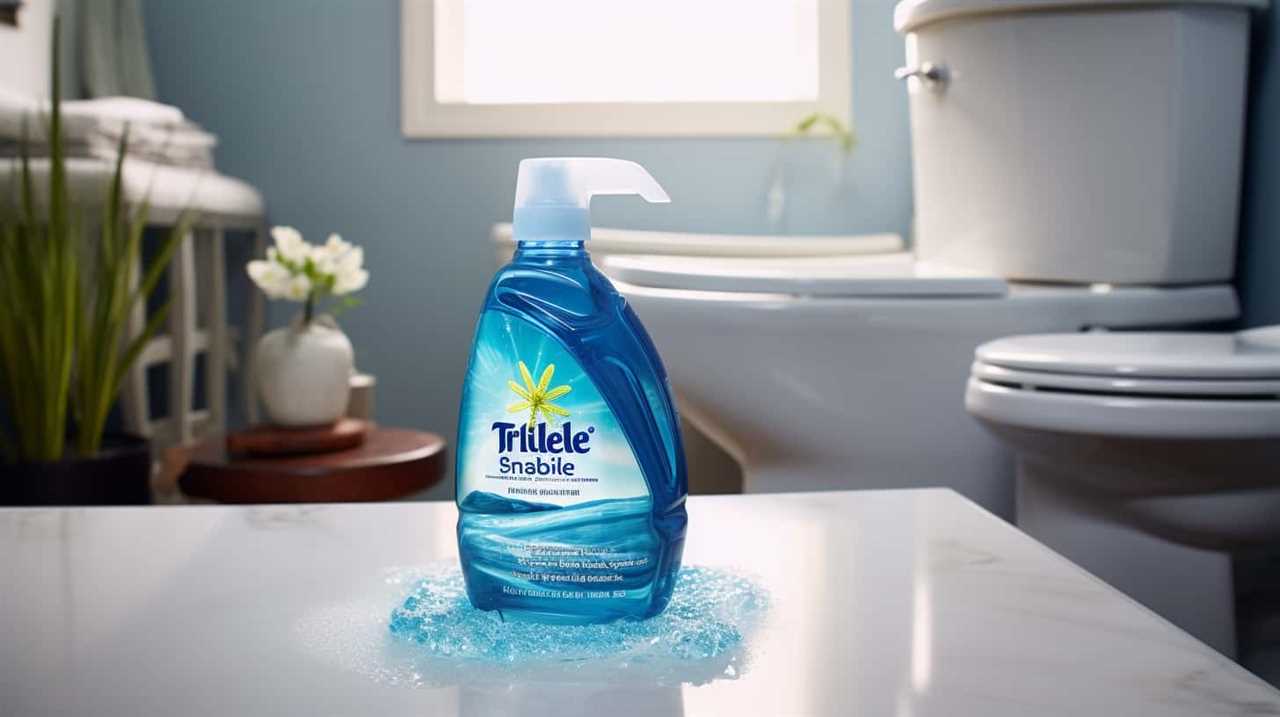
Are Sensor-Operated Flush Systems Compatible With Septic Tanks?
Sensor-operated flush systems offer numerous benefits, such as water conservation and improved hygiene. Troubleshooting can involve checking sensor alignment and battery levels. However, it’s important to consider compatibility with septic tanks to ensure optimal functionality and avoid potential issues.
Conclusion
In conclusion, using a sensor-operated flush system for your toilet provides numerous benefits, such as improved hygiene, reduced water usage, and increased convenience.
Choosing the right sensor and following the step-by-step installation guide ensures a seamless integration into your bathroom.
Proper maintenance and troubleshooting tips help to keep the system running smoothly.
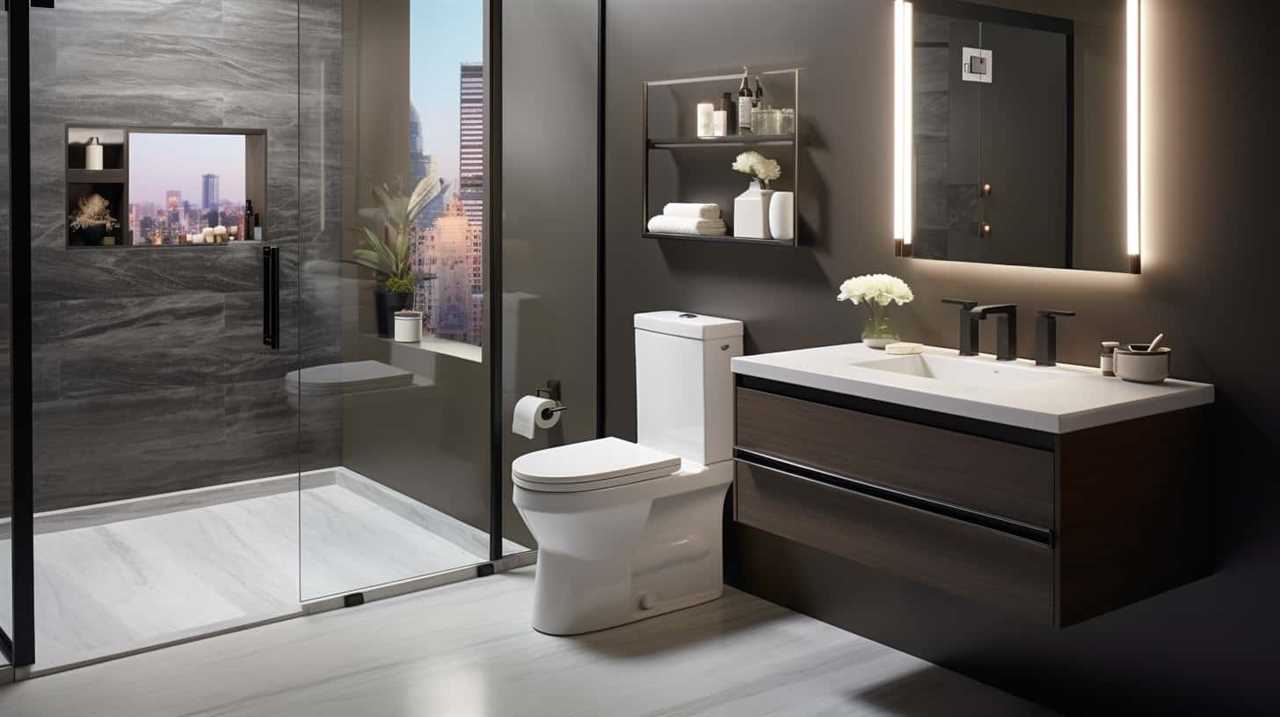
By maximizing efficiency and conserving water, you can contribute to a more sustainable future.
With an impeccable eye for detail and a passion for bathroom-related, Ava leads our editorial team gracefully and precisely.
Under her guidance, Best Modern Toilet has flourished as the go-to resource for modern bathroom enthusiasts. In her free time, you might find Ava exploring antique shops and looking for vintage bathroom fixtures to add to her collection.
FAQ - Advanced Bathroom Queries
How Do You Dispose of Condoms
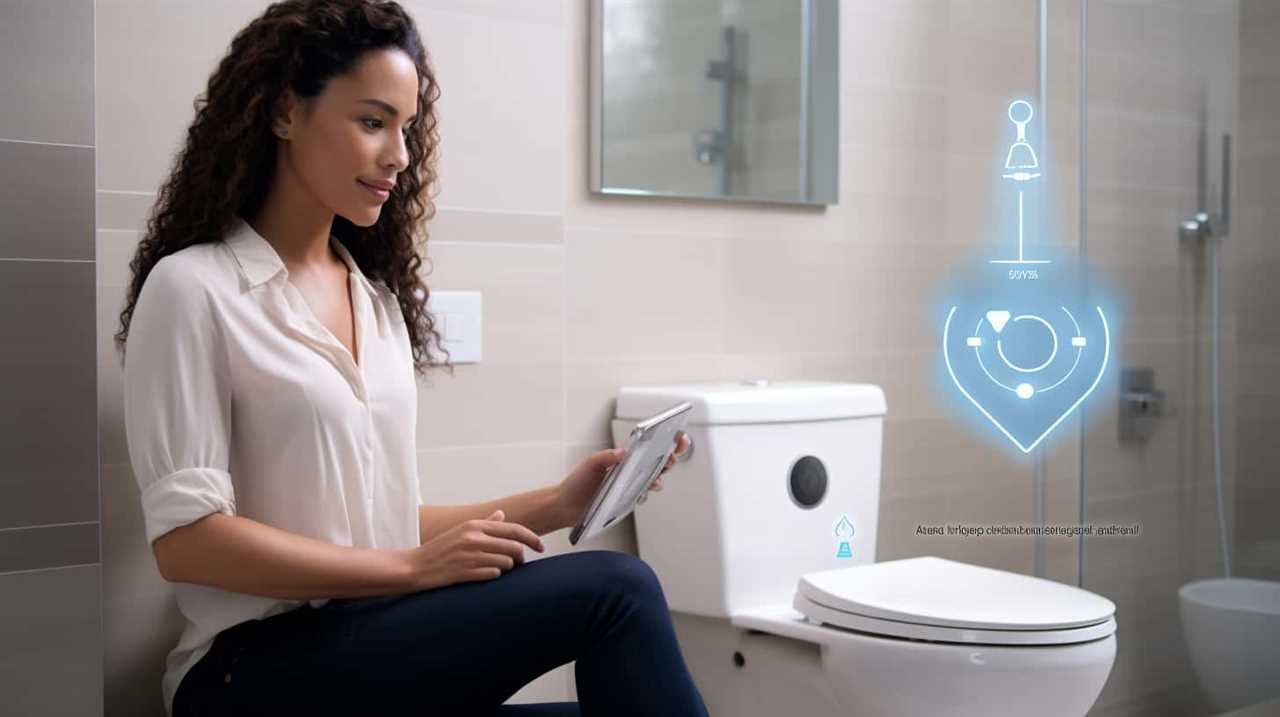
We’ve all experienced it – that moment after intimacy when we wonder what to do with used condoms. Don’t worry, we’re here to help you with the correct methods of wrapping, sealing, and discreetly throwing away this essential item.
From trash bins to flushable options, we’ll explore the various methods available. Join us as we delve into the world of condom disposal, addressing environmental considerations along the way.
Let’s master this essential aspect of adulting together.
Key Takeaways
- Properly dispose of condoms by wrapping them in tissue or toilet paper and sealing them in a plastic bag before throwing them in the trash.
- Avoid flushing condoms down the toilet to prevent plumbing issues and environmental harm.
- Consider recycling programs or options offered by some condom brands to reduce waste and benefit the environment.
- Use discreet disposal methods to ensure the condom remains hidden and reduces the risk of unwanted encounters.
Wrap and Seal
When it comes to disposing of condoms, one important step is to wrap and seal them securely. Proper condom storage and safe disposal practices are crucial to prevent the spread of sexually transmitted infections (STIs) and unwanted pregnancies.
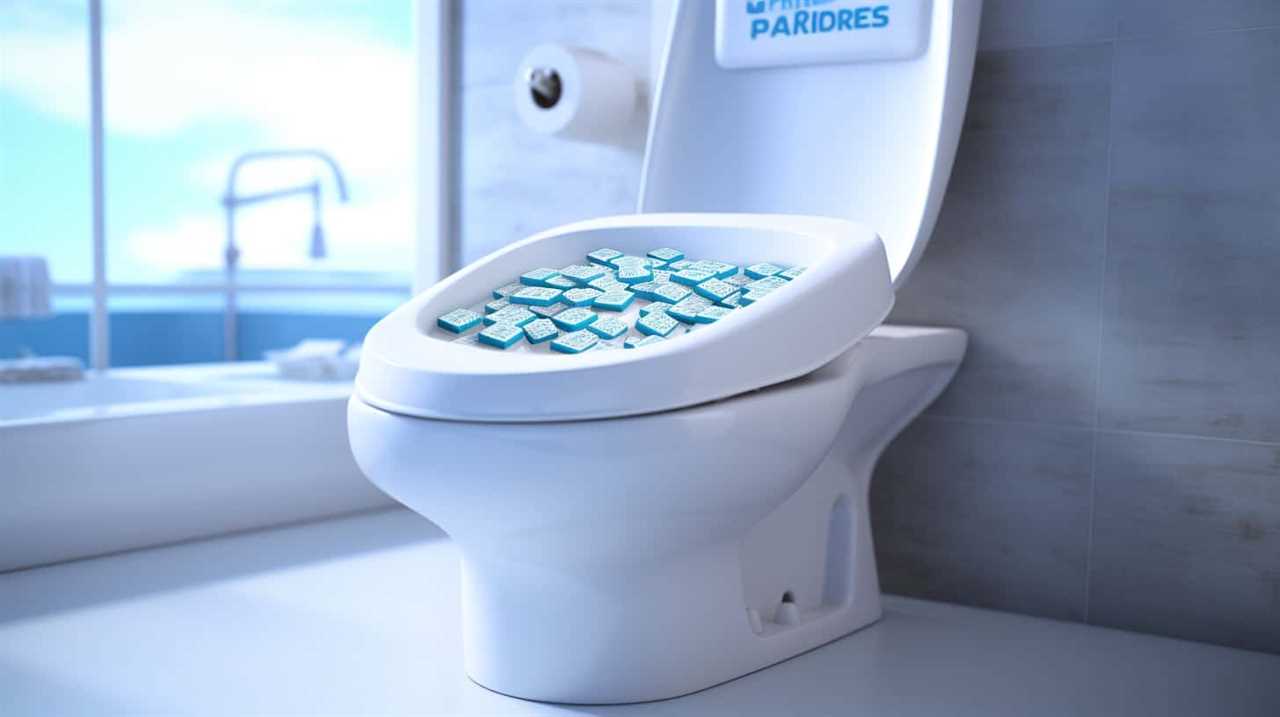
After use, it’s essential to remove the condom carefully and avoid any contact between the contents and your skin. To dispose of it safely, wrap the condom in tissue or toilet paper and seal it in a plastic bag before throwing it in the trash. This ensures that the condom is properly contained and prevents any potential leakage.
It’s also important to note that flushing condoms down the toilet should be avoided, as they can cause plumbing issues and harm the environment.
Trash Bin
We dispose of used condoms by throwing them in the trash bin. While this may seem like the obvious choice, it’s important to consider other condom disposal options and recycling possibilities.
Condoms aren’t biodegradable and can take a long time to decompose in landfills. However, some recycling programs do accept latex condoms. These programs typically collect used condoms and recycle them into new products such as rubber playground surfaces or rubberized asphalt. It’s crucial to check with your local recycling facilities to see if they accept condoms for recycling.

Proper disposal and recycling of condoms can help reduce waste and have a positive impact on the environment. Now, let’s explore another option for disposing of condoms – flushable options.
Flushable Options
To continue our discussion on condom disposal, let’s explore the option of using flushable alternatives.
While it may seem convenient to flush condoms down the toilet, it’s important to note that most condoms aren’t designed to break down in water. However, there are biodegradable options available that are specifically designed to be septic safe.
One such option is the flushable condom, which is made from materials that can break down in water. These condoms are designed to dissolve and disintegrate, reducing the risk of clogging pipes or damaging septic systems. It’s crucial to choose a brand that meets industry standards for flushability, ensuring that they’re truly safe to flush.

It is important to note that not all brands claiming to be flushable are actually safe for your plumbing or the environment. Be sure to read the packaging and look for certifications that indicate the condoms meet appropriate standards.
Discreet Disposal Methods
For discreet disposal methods, our go-to option is to wrap the used condom in tissue paper before placing it in a sealed bag or container. This ensures that the condom remains hidden and reduces the risk of any unwanted encounters or odors.
Additionally, here are some other disposal options to consider:
- Flushable options: Some condoms are specifically designed to be flushed down the toilet. However, it’s crucial to check the packaging or manufacturer’s instructions to ensure they’re indeed flushable.
- Trash cans: Disposing of condoms in a trash can is another safe disposal option. Make sure to wrap the condom in tissue paper or place it in a small bag before throwing it away. This helps to prevent any accidental spills or exposure.
- Disposal bags: Special disposal bags are available in the market for safe condom disposal. These bags are designed to seal the condom securely and prevent any leaks or odors.
Environmental Considerations
When considering the disposal of condoms, it is important to take into account their impact on the environment. Condoms are typically made of latex or polyurethane, both of which are not biodegradable. This means that when condoms are improperly disposed of, they can contribute to pollution and harm ecosystems. However, there are sustainable alternatives and biodegradable condom options available that can help mitigate these environmental concerns.
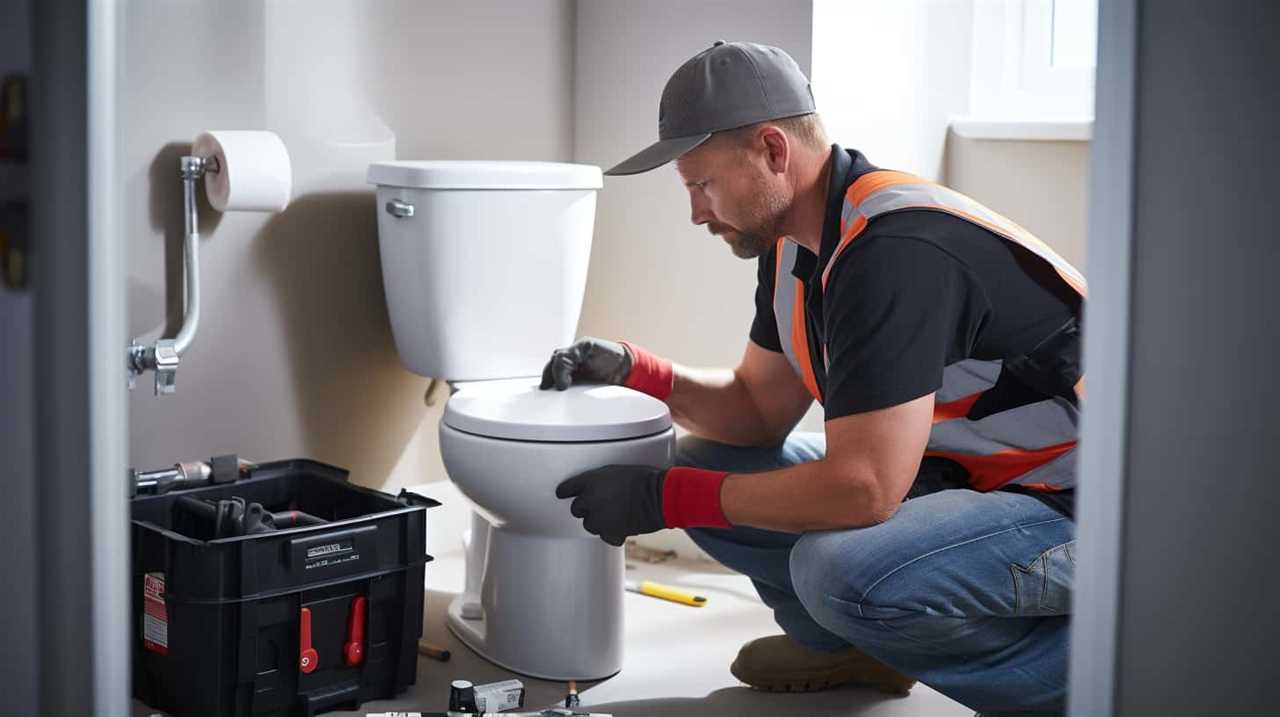
To make it easier to understand the environmental impact of condoms, here is a table comparing their disposal methods:
| Disposal Method | Environmental Impact |
|---|---|
| Flush | Can clog pipes and contribute to sewage pollution |
| Trash | Condoms can end up in landfills, taking years to decompose |
| Proper Recycling | Some condom brands offer recycling programs, reducing waste |
In addition to proper disposal, individuals can also consider using sustainable alternatives such as reusable condoms or natural latex condoms that are biodegradable. By making conscious choices, we can minimize the environmental impact of condom disposal and prioritize the health of our planet.
Frequently Asked Questions
Can I Reuse a Condom After Washing It?
Sure, you may wonder if reusing a washed condom is safe, but it’s important to prioritize your sexual health. Condoms are designed for one-time use only and should be disposed of properly to prevent any risk of infection or unintended pregnancy.
Are There Any Alternative Methods to Dispose of Condoms Besides Throwing Them in the Trash or Flushing Them?
When it comes to disposing of condoms, there are alternative and eco-friendly methods available. Instead of just throwing them in the trash or flushing them, consider options like recycling programs or using biodegradable condoms.
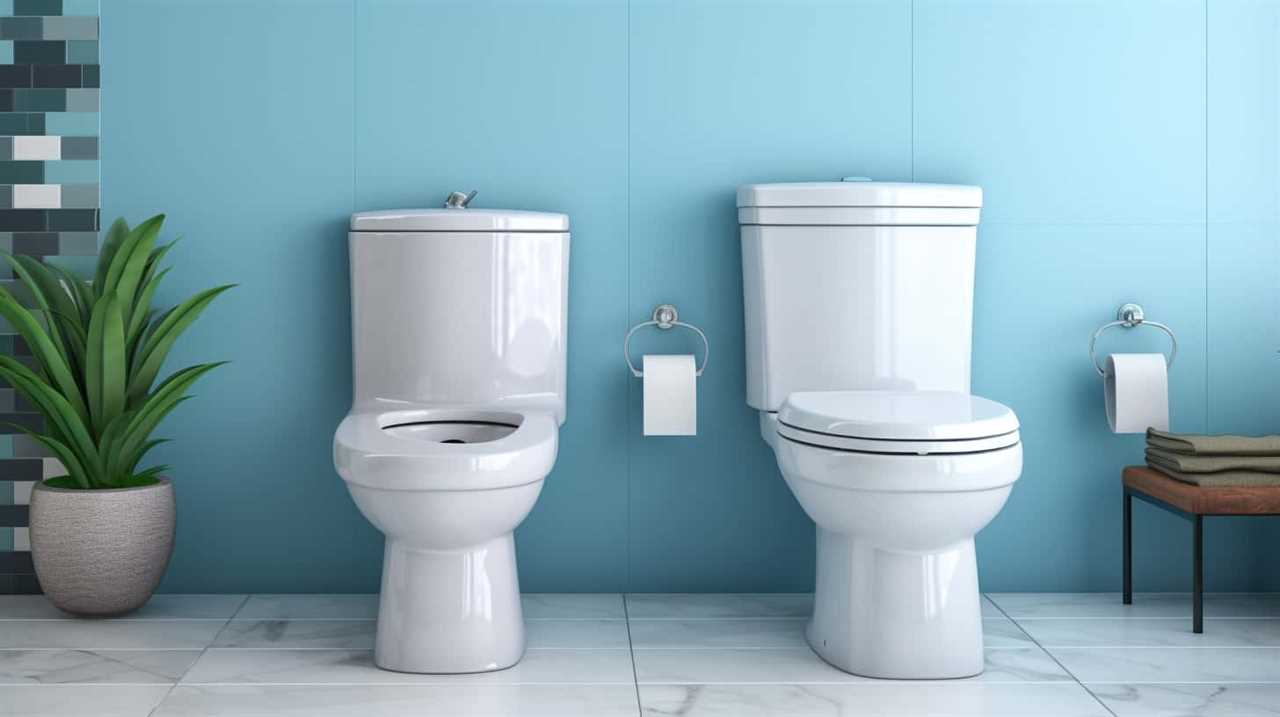
What Should I Do if There Are No Discreet Disposal Methods Available to Me?
If no discreet disposal methods are available, we can resort to emergency disposal methods. Creative condom disposal ideas include wrapping them in tissue and placing them in a sealed bag before throwing them away.
Are There Any Health Risks Associated With Improperly Disposing of Condoms?
Improperly disposing of condoms can pose health risks and have consequences. It’s important to follow proper disposal methods to prevent the spread of infections and diseases.
Can Condoms Be Recycled?
Recycling condoms is not currently a common practice. However, there are sustainable condom options available, such as those made from natural materials or biodegradable materials, which can help reduce environmental impact.
Conclusion
In conclusion, it’s essential to dispose of condoms properly to protect both our health and the environment.
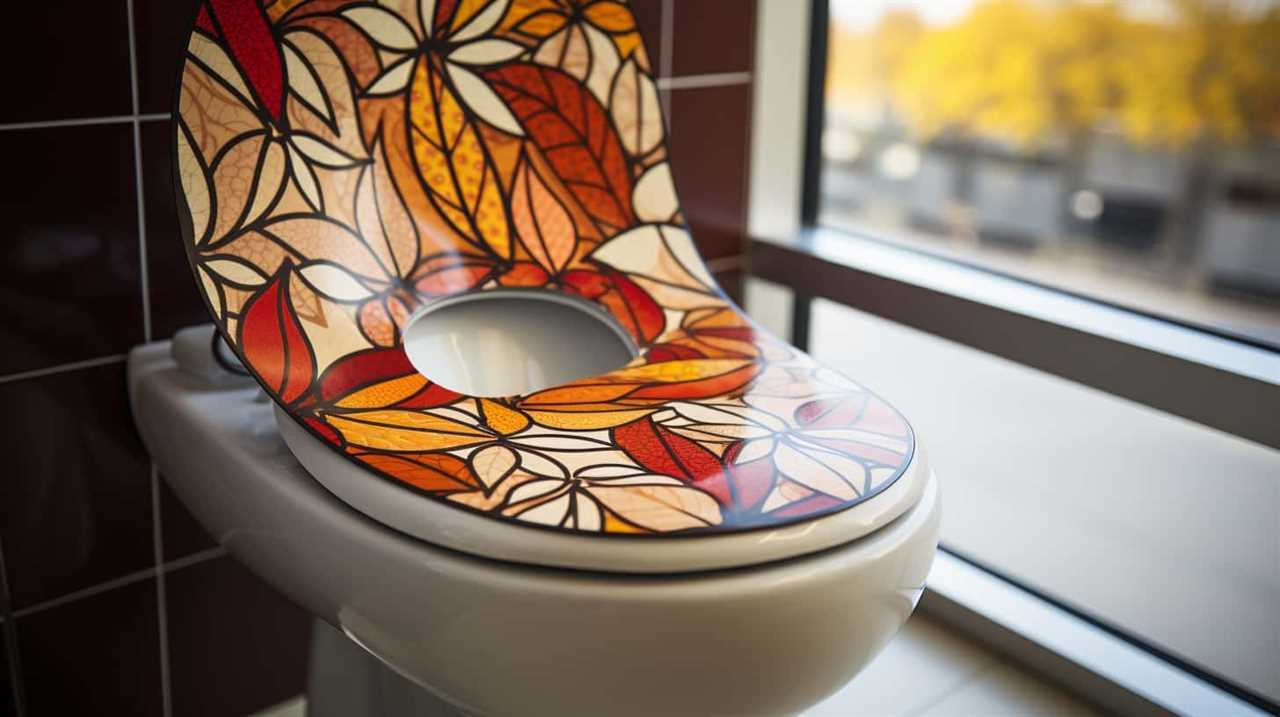
By wrapping and sealing them before placing them in a trash bin, using flushable options where available, or utilizing discreet disposal methods, we can ensure the responsible and safe disposal of condoms.
Let’s remember that by taking these simple steps, we contribute to a cleaner and healthier world for ourselves and future generations.
Together, we can make a difference.
With an impeccable eye for detail and a passion for bathroom-related, Ava leads our editorial team gracefully and precisely.
Under her guidance, Best Modern Toilet has flourished as the go-to resource for modern bathroom enthusiasts. In her free time, you might find Ava exploring antique shops and looking for vintage bathroom fixtures to add to her collection.
-

 Bathroom Enhancements3 months ago
Bathroom Enhancements3 months agoWill Hot Bath Lower Blood Pressure
-

 Reviews2 months ago
Reviews2 months agoLDian Smart Toilet Review [2024]
-

 Reviews3 months ago
Reviews3 months agoKohler Innate Smart Toilet Review [2024]
-

 Bathtub1 week ago
Bathtub1 week agoAre Clorox Toilet Wand Refills Septic Safe
-

 Reviews3 months ago
Reviews3 months agoKohler NUMI 2.0 Smart Toilet Review [2024]
-

 Reviews3 months ago
Reviews3 months agoCANEST Smart Toilet Review: The Ultimate Bathroom Upgrade [2024]
-

 Toilet Types3 months ago
Toilet Types3 months agoAre Bleach Tablets Bad for Your Toilet
-

 Reviews3 months ago
Reviews3 months agoWoodbridge B0970S Smart Bidet Toilet Review [2024]





















